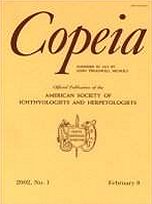The extension and retraction of the throat fan or dewlap is one of the most conspicuous aspects of the display behavior of male Anolis lizards. We explored aspects of the functional significance of displaying the male's dewlap by surgically preventing male brown anoles (Anolis sagrei) from extending their dewlaps and comparing their behavior with controls that could extend their dewlaps. In 30-min laboratory contests, we compared the display behavior of untreated males paired with either experimental males or with sham-treated control males. In a subsequent field study, we tested what effect displaying the dewlap has on male residence time (days males remained at a site), visibility (number of sightings of males), maximum distance moved (from site of release), home range size, and body size during 18 censuses over a 47-day period. Untreated males paired with the two types of stimulus males in the laboratory study did not differ significantly in latency to display, number of dewlap extensions, number of bobbing displays, number of bobbing displays with dewlap extensions, or in proportion of males erecting crests in both short distance physical encounters (< 0.6 m) and in visual encounters at 1 m and 3 m. Thus, males did not modify their display behavior based on whether their opponents extended their dewlaps. In the field study, experimental and control males did not differ significantly in residence time, visibility, maximum distanced moved, and home-range size. In addition, males in the two treatment groups captured at the end of the study did not differ in snout–vent length or body mass. These results provide no evidence for a functional significance of the displaying of the male's dewlap in A. sagrei.
BioOne.org will be down briefly for maintenance on 17 December 2024 between 18:00-22:00 Pacific Time US. We apologize for any inconvenience.
How to translate text using browser tools
1 September 2003
Laboratory and Field Test of the Functional Significance of the Male's Dewlap in the Lizard Anolis sagrei
Richard R. Tokarz,
Ann V. Paterson,
Stephen McMann
ACCESS THE FULL ARTICLE

Copeia
Vol. 2003 • No. 3
September 2003
Vol. 2003 • No. 3
September 2003




